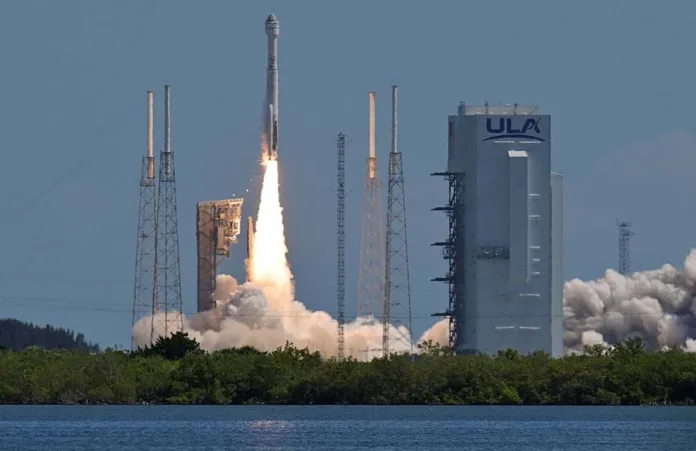The crewed space capsule, with commander Butch Wilmore and Suni Williams aboard, overcomes previous setbacks to begin its journey to the ISS
Boeing’s Starliner, a crewed space capsule, has finally lifted off to the International Space Station (ISS) after encountering a series of delays. The launch, carrying Commander Butch Wilmore and astronaut Suni Williams, marks the first crewed test flight of Starliner after multiple setbacks, including faults with the capsule and the rocket.
The United Launch Alliance Atlas V rocket propelled Starliner from pad 41 at Cape Canaveral in Florida. Commander Wilmore and Williams are scheduled to dock with the ISS on Thursday and spend a week aboard the station before returning to Earth. Notably, Williams is the first female test pilot of an orbital spacecraft.
NASA administrator Bill Nelson expressed enthusiasm for the historic test flight, emphasizing the significance of Starliner in American space exploration. He hailed the mission as a new chapter in human spaceflight and highlighted the collaborative efforts between NASA and commercial partners like Boeing.
Despite three previous launch attempts being scrubbed this year, Wednesday’s lift-off proceeded smoothly, with Starliner ascending into the sky on a United Launch Alliance rocket. The capsule’s launch trajectory included safety modifications to ensure crew safety, allowing for an emergency abort if needed.
Starliner serves as a critical alternative to SpaceX’s Crew Dragon spacecraft, providing transportation for US, European, Canadian, and Japanese astronauts to and from the ISS. If NASA certifies Starliner after this test flight, Boeing aims to commence operational flights by spring 2025.
NASA awarded contracts to both SpaceX and Boeing in 2014 to develop commercial crew capsules. While SpaceX successfully transported astronauts in 2020, Boeing faced challenges with its Starliner program. The first uncrewed mission in 2019 encountered fuel depletion issues, and a second flight in 2022 experienced thruster problems.
Last year’s planned launches were postponed due to various technical issues, including overheating batteries and concerns about the parachute system for the capsule’s return to Earth. Boeing’s losses on the Starliner program are estimated to be around $1.5 billion (£1.2 billion).
Analysis:
Political Impact
Boeing’s successful launch of Starliner underscores the political significance of public-private partnerships in space exploration. The collaboration between NASA and commercial entities like Boeing represents a shift in space policy, with implications for national space programs and international cooperation in space endeavours.
Social Reflection
The journey of Starliner reflects broader societal aspirations for space exploration and technological advancement. Public interest in space missions, especially crewed flights, highlights the fascination with space travel and the exploration of the unknown. The inclusion of the first female test pilot in an orbital spacecraft resonates with efforts to promote diversity and inclusion in STEM fields.
Psychological Aspect
The successful launch of Starliner after multiple setbacks is a testament to human resilience and determination in the face of adversity. The perseverance of engineers, astronauts, and support personnel involved in the program demonstrates the psychological fortitude required for space exploration. The triumph over technical challenges inspires confidence in the capabilities of human spaceflight.
Sociological Angle
Boeing’s Starliner launch exemplifies the societal values of exploration, innovation, and collaboration. The pursuit of space exploration reflects humanity’s innate curiosity and desire to push the boundaries of knowledge and technology. The global interest in space missions fosters a sense of shared humanity and collective progress, transcending national boundaries and cultural differences.
Fashion Culture
While not directly related to fashion, the symbolism of Starliner’s launch may inspire creative expressions in design and aesthetics. Space missions often captivate the imagination and influence popular culture, including fashion trends and futuristic aesthetics. The sleek design of spacecraft like Starliner may inspire futuristic fashion concepts and artistic interpretations of space exploration.
